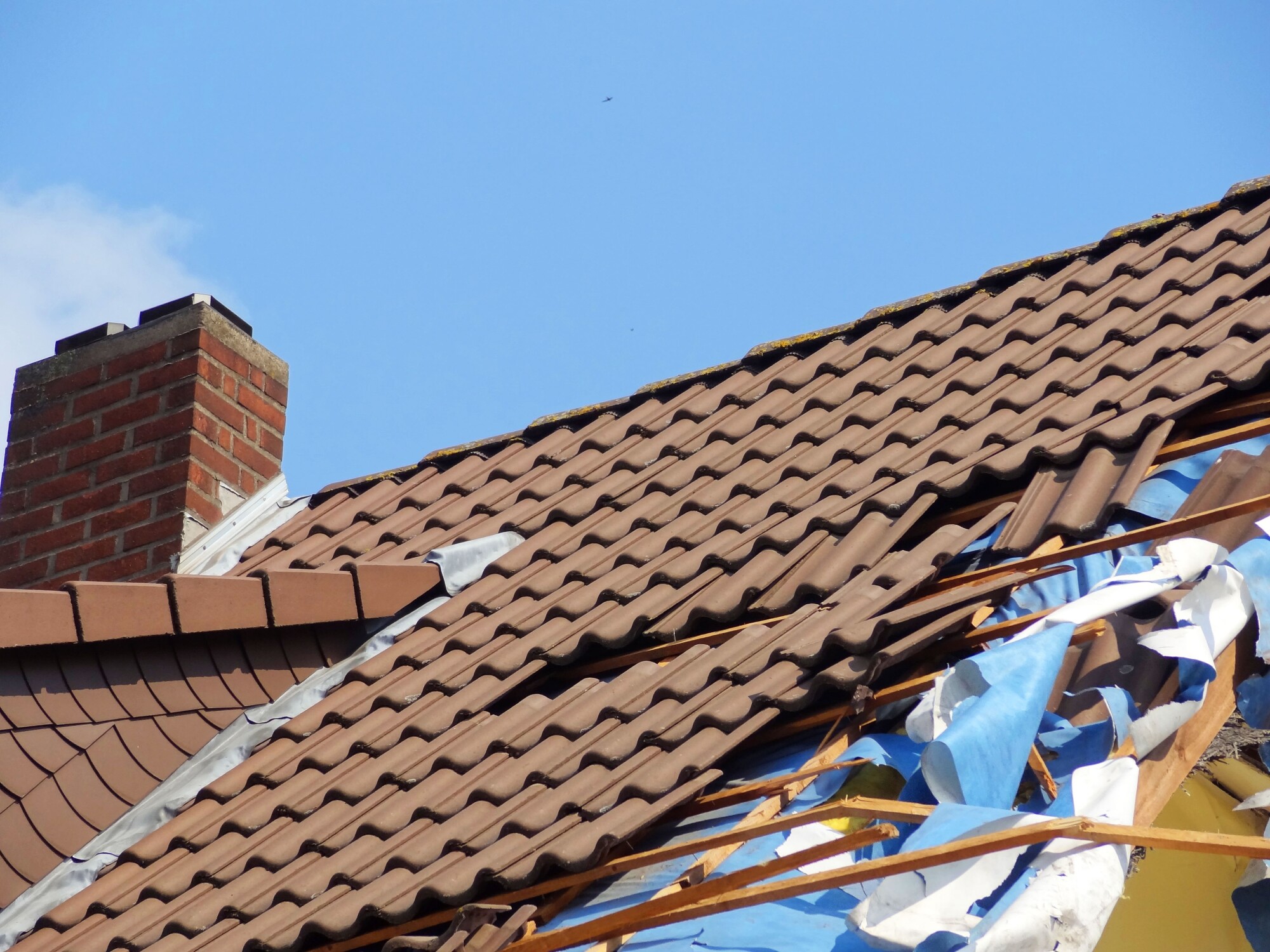 Since 1950, 142 known hurricanes, storms, and tropical depressions have affected Maryland.
Since 1950, 142 known hurricanes, storms, and tropical depressions have affected Maryland.
Many people in Maryland may not know what kind of roof damage can be caused by different types of storms.
Storms can cause a lot of damage to homes, and often that damage is to the roof. It’s important to be aware of the different kinds of roof storm damage that can occur so you can take steps to prevent it or fix it as soon as possible.
Keep reading because this guide will teach you about the most common types of roof storm damage, including coastal wind damage, winter storm damage, and hail damage. You’ll also learn about some lesser-known types of roof damage like tornado and hurricane damage.
Heavy Winds
While most people associate severe weather with damage from heavy rains or snowstorms, high winds can also be a major threat to your home. One of the most common types of roof storm damage is wind damage. High winds can cause shingles to blow off your roof, leaving your home vulnerable to water leaks and other problems.
In addition, wind-blown debris can damage your gutters and downspouts, making it difficult for rainwater to drain properly from your roof. If you live in an area susceptible to high winds, it’s important to have a strong, well-maintained roof that can withstand the force of the wind.
Hurricanes
While hurricanes are not as common in Maryland as they are in other parts of the country, they can still cause serious damage to your roof. High winds and heavy rains can damage shingles, loosen nails, and even cause your roof to collapse. If you live in an area that is prone to hurricanes, it’s important to have a hurricane-resistant roof installed by licensed roofing contractors.
Ask your friends and family for their recommendations on roof repair in Maryland.
Winter Storms
Winter storms can cause a lot of damage to your roof. Heavy snowfall can put stress on your roof, causing shingles to come loose or even break. In addition, ice dams can form on your roof, trapping water and melting snow which can then leak into your home and cause water damage.
Your best defense against winter storm damage is to have a good quality roof that is in good repair. If you live in an area that gets a lot of snow, you may want to consider installing a metal roof, which is much more resistant to heavy snowfall than a traditional shingle roof. You should also make sure that your gutters are clean and clear of debris so that they can drain properly.
Heavy Rainfall
Anyone who has experienced a heavy rainstorm knows that severe weather can take a toll on your home. High winds can damage shingles and cause branches to fall, while heavy rain can lead to leaks and flooding. However, one often overlooked consequence of severe weather is the damage it can cause to your roof.
Gutters and downspouts that are not properly installed or maintained can become clogged, causing rainwater to back up onto your roof. This can lead to leaks, water damage, and even mold growth. In addition, heavy rains can loosen shingles and cause them to blow off, leaving your roof vulnerable to further damage.
Stress from Fallen Trees
Trees can be beautiful and provide much-needed shade on a hot summer day, but they can also be a source of serious damage to your home. In addition to high winds, another common cause of roof damage is falling trees. If a tree falls on your roof, it can cause serious structural damage.
In addition, if the tree is large enough, it can crush your home entirely. The best way to protect your home from falling trees is to have them regularly inspected by a certified arborist. An arborist will be able to identify any potential dangers and take steps to mitigate the risk.
For example, they may recommend pruning branches that are close to your roofline or removing trees that are close to your home
Tornado Damage
Although tornados are not common in Maryland, they can still occur. Tornados can cause significant damage to your roof, including tearing off shingles, breaking windows, and causing the roof to collapse. If you live in an area that is prone to tornados, it’s important to have a tornado-resistant roof installed by a professional.
Tornado-resistant roofs are designed to withstand high winds and flying debris and can help to protect your home from serious damage in the event of a tornado. In addition to installing a tornado-resistant roof, you should also take other steps to prepare your home for a tornado, such as reinforcing doors and windows and making sure that all loose items are securely anchored.
Hail Damage
Hail is one type of storm that can cause significant damage to your roof. Hailstones can break shingles and cause other problems. In addition, if the hail is large enough, it can dent or even puncture your roof, causing leaks and water damage.
If you live in an area that is prone to hail storms, it is important to have your roof inspected regularly and make any necessary repairs. By taking these precautions, you can help to protect your home from the potentially devastating effects of hail damage.
Protect Yourself From Storm Damage
Roof storm damage can be caused by many different types of weather conditions. Each type of roof storm damage has the potential to cause a different kind of problem for your home. That’s why it’s important to know what kinds of storms are most likely to affect your area, and what you can do to prepare your home in advance.
Make sure you check out our blog regularly for more tips on roof repair and how to protect your home from the damages of bad weather.



Leave a Reply